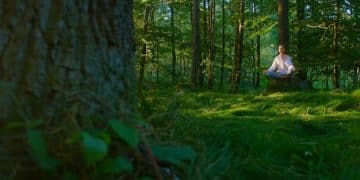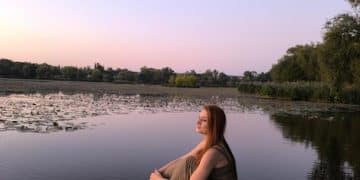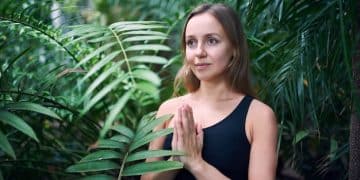Unleash Your Inner Spirit: Exploring Art for Self-Expression and Healing
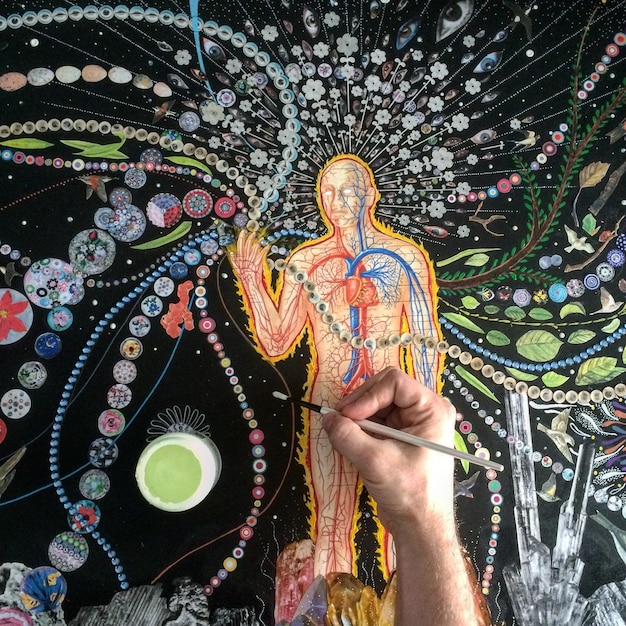
Exploring Your Spirituality Through Art: Unleashing Creativity for Self-Expression and Healing is a transformative journey that uses artistic expression as a pathway to deeper self-understanding, emotional healing, and spiritual connection.
Are you seeking a unique and profound way to connect with your inner self? Exploring Your Spirituality Through Art: Unleashing Creativity for Self-Expression and Healing offers a powerful avenue for self-discovery, emotional release, and spiritual growth through the transformative process of artistic creation.
Unlocking Spirituality Through Artistic Expression
Connecting with our spirituality can often feel like an elusive quest. Many traditional paths involve practices like meditation, prayer, or philosophical study. However, for some, these methods don’t resonate as deeply as they might hope. This is where art comes in as a powerful alternative, offering a pathway to access the spiritual realm through creative engagement.
Art allows us to tap into emotions and thoughts that may be buried beneath the surface of our conscious awareness. It provides a safe space to explore complex feelings, express the inexpressible, and discover new dimensions of ourselves.
The Essence of Spiritual Art
Spiritual art isn’t necessarily about religious iconography or specific subject matter. Instead, it’s about the artist’s intention and the process of creation. It is art that evokes a sense of wonder, connection, and transcendence. Below are a few key elements that define spiritual art:
- Intention: The artist approaches the creative process with a desire to connect with something larger than themselves, whether it be a higher power, the natural world, or their own inner wisdom.
- Process: The act of creation becomes a meditative practice. The artist is fully present in the moment, allowing the art to flow through them without judgment or control.
- Emotion: The art evokes strong emotions in both the artist and the viewer. These emotions can range from joy and peace to grief and anger, but they are always authentic and deeply felt.
Ultimately, exploring your spirituality through art is a personal journey, where the meaning and practice will be unique to each individual.
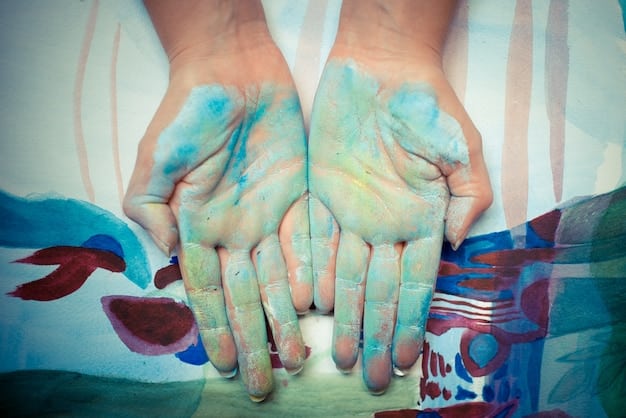
Art as a Mirror to the Soul
Engaging with art can serve as a mirror reflecting our inner landscape. Through creative expression, we can gain a deeper understanding of our thoughts, emotions, and beliefs, revealing aspects of ourselves that may have been hidden or overlooked.
This reflective process is not always easy, as it may involve confronting uncomfortable truths or suppressed feelings. However, it is through these moments of vulnerability that true healing and growth can occur.
Identifying Hidden Emotions Through Art
Creating art allows you to bypass the analytical mind and tap into the emotional center. It could be the colors you choose, the textures you create, or the images that emerge spontaneously. All of these elements can offer clues to your internal state.
Consider these points while creating art:
- Color psychology: Observe your color preferences. Certain colors are often associated with specific emotions. For example, blue can represent calmness, while red can signify passion or anger.
- Symbolism: Pay attention to recurring symbols or images in your art. These may represent unconscious desires, fears, or beliefs.
- Intuition: Trust your intuition during the creative process. Don’t overthink or analyze your work. Allow your emotions to guide your hand.
By observing and reflecting on your artistic creations, you can unlock profound insights into your inner world and gain a greater understanding of yourself.
Creative Practices for Spiritual Exploration
There are countless ways to incorporate art into your spiritual practice. The key is to find activities that resonate with you and allow you to express yourself authentically.
Whether you’re drawn to painting, sculpting, writing, or any other art form, the possibilities are endless. The most important thing is to approach the process with an open mind and a willingness to explore.
Different Avenues for Spiritual Art
Here are a few creative practices that can help you uncover your spirituality:
- Mandala drawing: Mandalas are geometric designs that represent the universe. Creating your own mandala can be a meditative and centering practice.
- Nature journaling: Spend time in nature and capture your observations through drawing, painting, or writing. This can help you connect with the natural world and appreciate its beauty.
- Automatic writing: Allow your hand to move freely across the page without conscious thought. This can help you access your subconscious mind and uncover hidden insights.
Try experimenting with different techniques and mediums to discover what works best for you. Allow your creativity to guide you and trust the process.
The Healing Power of Art: Transforming Pain into Beauty
Art can serve as a powerful tool for healing emotional wounds and transforming pain into beauty. By expressing difficult emotions through creative outlets, we can begin to process and release them, paving the way for healing and growth.
The act of creating art can be therapeutic in itself. It can provide a sense of accomplishment, boost self-esteem, and reduce stress and anxiety.
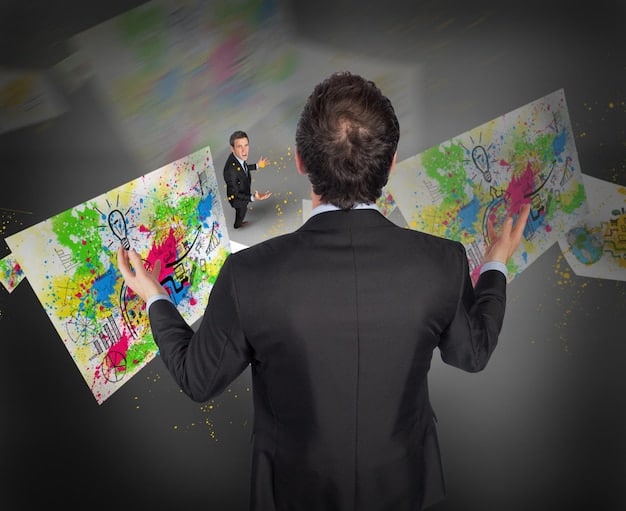
Examples of Art Therapy Techniques
Art therapy is a professional field that utilizes creative methods to address emotional, mental, and behavioral health issues. While you don’t need to be a trained art therapist to benefit from the healing power of art, understanding some basic techniques can be helpful:
- Drawing or painting your emotions: Choose a color, shape, or image that represents your current emotional state and express it on paper or canvas.
- Creating a collage: Gather images, words, and textures that resonate with you and arrange them into a meaningful composition.
- Sculpting with clay: Use clay to create a physical representation of your emotions, thoughts, or experiences.
Remember, the goal is not to create a perfect masterpiece. It is to use art as a tool for self-expression and healing.
Creating a Sacred Space for Artistic Exploration
Creating a dedicated space where you can freely express yourself is essential and will reinforce your journey of self discovery. A peaceful and inspiring environment can help you feel more comfortable, focused, and connected to your creative energy.
This space doesn’t need to be large or elaborate. It simply needs to be a place where you feel safe, supported, and inspired to create.
Setting Up Your Creative Sanctuary
Here are a few tips for creating a sacred space for artistic exploration:
- Choose a location: Select a room, corner, or even a portable kit that you can easily set up and take down.
- Clear the clutter: Remove any distractions or items that don’t inspire you.
- Add personal touches: Incorporate elements that make you feel happy and creative—such as plants, candles, crystals, or inspiring images.
- Make it comfortable: Ensure that your space is comfortable and inviting. This might include a comfortable chair, soft lighting, or soothing music.
Once you have created your sacred space, take some time to simply be present in it. Breathe deeply, close your eyes, and connect with the energy of the space. This will help you set the intention for your creative practice.
Cultivating Mindfulness Through Art
Mindfulness is the practice of paying attention to the present moment without judgment. When practiced through art, it enhances the creative process and enriches your spiritual awareness.
The mindful approach to art making encourages you to slow down, observe your thoughts and feelings, and fully engage with the materials and the process.
How to Practice Mindful Art
Here are some tips on using mindfulness while creating art:
- Focus on the process: Instead of focusing on the end result, focus on the experience of creating. Notice the sensations of the brush against the canvas, the smell of the paint, or the texture of the clay.
- Let go of judgment: Release any self-criticism or expectations of perfection. Allow yourself to make mistakes and learn from them.
- Embrace the moment: Be fully present in the moment and allow your creativity to flow freely. Don’t worry about what you should be doing or what others might think.
- Observe your thoughts and emotions: As you create art, notice any thoughts or emotions that arise. Acknowledge them without judgment and allow them to pass.
By practicing mindfulness through art, you can cultivate a deeper sense of self-awareness, reduce stress, and enhance your overall well-being.
| Key Concept | Brief Description |
|---|---|
| 🎨 Art as Reflection | Using art to understand and express hidden feelings, revealing inner insights. |
| ✨ Spiritual Art Types | Includes practices like mandala drawing, nature journaling, and automatic writing. |
| 🧘 Mindful Art | Focusing on the art process to enhance self-awareness and reduce stress. |
| 🌱 Emotional Healing | Transforming emotional pain into beauty through expressive and therapeutic art. |
Frequently Asked Questions
▼
Art allows you to express emotions and thoughts without words, providing a direct connection to your inner self and spiritual beliefs. It’s a way to tap into your subconscious and find deeper meaning.
▼
There’s no single “best” type. Experiment with painting, drawing, sculpting, writing, or any other medium that resonates with you. The key is to find an activity that allows for authentic expression.
▼
Not at all! This isn’t about creating masterpieces; it’s about the process of self-discovery and expression. Focus on the experience, not the outcome. Let go of expectations of perfection.
▼
There’s no set schedule. Even short, regular sessions can be very effective. Listen to your intuition and create when you feel called to do so. Consistency is more important than intensity.
▼
Yes, expressing difficult emotions through art can be incredibly therapeutic. It allows you to process and release pent-up feelings, fostering emotional resilience and overall well-being. It offers a safe outlet for your feelings.
Conclusion
Exploring Your Spirituality Through Art: Unleashing Creativity for Self-Expression and Healing provides a meaningful route to self-discovery. By embracing the creative process, cultivating mindfulness, and honoring your inner voice, you can unlock profound insights, heal emotional wounds, and foster a deeper connection with your true self.


